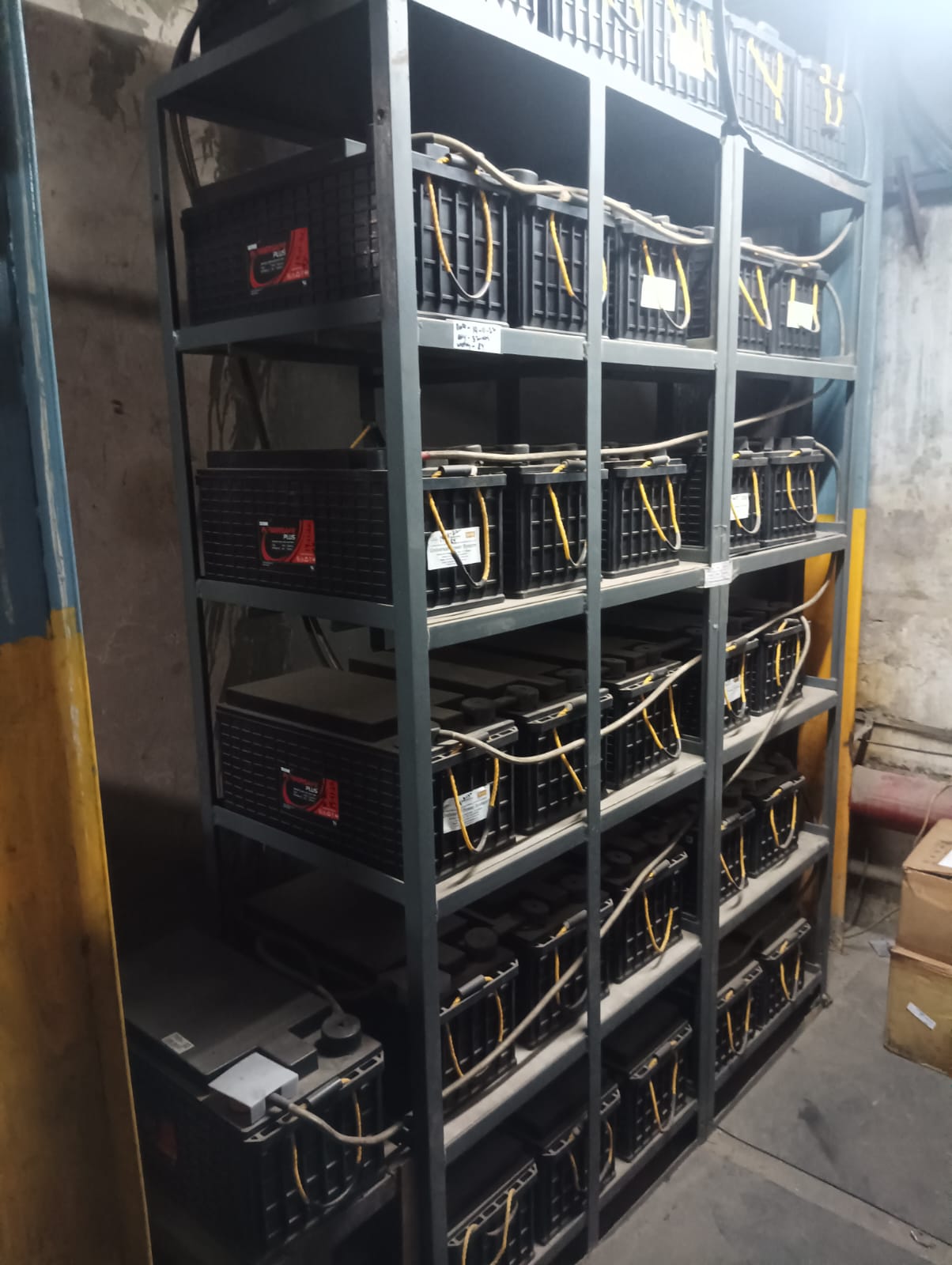Vertiv 500 kva Ups
The Vertiv 500 kVA UPS (Uninterruptible Power Supply) is a high-capacity power protection solution designed for industrial applications, data centers, and critical infrastructure. Here’s a detailed overview of its features, specifications, benefits, and maintenance practices.
Vertiv 500 kVA UPS Overview
Key Features
High Power Capacity:
Provides 500 kVA of power, suitable for large-scale applications requiring substantial backup power.
Topologies:
Online Double-Conversion: This design ensures continuous, clean, and stable power by converting incoming AC to DC and then back to AC, offering maximum protection against power disturbances.
High Efficiency:
Typically achieves efficiencies of 95% or higher, reducing energy consumption and operational costs.
Scalability:
Supports parallel operation with multiple units for increased redundancy and power capacity as your needs grow.
Advanced Battery Management:
Features for optimizing battery performance, including temperature monitoring, state of charge, and predictive diagnostics.
User-Friendly Interface:
LCD or LED displays provide real-time monitoring of power status, battery health, and load levels.
Network Management Capabilities:
Integration with network management systems for remote monitoring and control, often through SNMP or web interfaces.
Vibration and Shock Resistance:
Designed to withstand industrial environments, making it reliable for mission-critical applications.
Multiple Input/Output Options:
Flexible configurations to match various voltage and phase requirements.
Specifications (Typical)
Input Voltage: 380/400/415 V (Three-phase)
Output Voltage: 380/400/415 V (Three-phase)
Output Frequency: 50/60 Hz (auto-sensing)
Efficiency: Up to 98% in eco mode.
Dimensions: Varies by model; typically designed for rack or floor mounting.
Weight: Can exceed 1000 kg, depending on configuration and battery type.
Battery Types: Can support various battery technologies, including lead-acid and lithium-ion.
Benefits
Reliability:
Ensures uninterrupted power supply and protects critical loads from power disturbances.
Cost Savings:
High efficiency leads to lower energy costs, while predictive maintenance helps avoid expensive downtimes.
Enhanced Performance:
Maintains stable output voltage and frequency, protecting sensitive equipment.
Proactive Monitoring:
Remote monitoring capabilities allow for early detection of potential issues, improving uptime and reliability.
Robust Design:
Built to withstand harsh industrial conditions, ensuring longevity and performance.
Maintenance and Support
Regular Inspections:
Schedule periodic checks to assess the condition of the UPS and batteries.
Preventive Maintenance:
Cleaning, tightening connections, and replacing worn-out parts as needed.
Battery Management:
Monitor battery health, perform load tests, and replace batteries according to manufacturer guidelines.
Documentation:
Keep detailed records of maintenance, inspections, and performance metrics.
Emergency Support:
Engage professional services for emergency repairs and technical support when needed.
Conclusion
The Vertiv 500 kVA UPS is a robust solution designed for high-demand environments, ensuring reliable power protection for critical applications. With its advanced features and capabilities, it is ideal for data centers, industrial applications, and other mission-critical settings. Proper maintenance and proactive management can further enhance its performance and longevity.
If you have specific questions or need additional details, feel free to ask!
Send
Message








